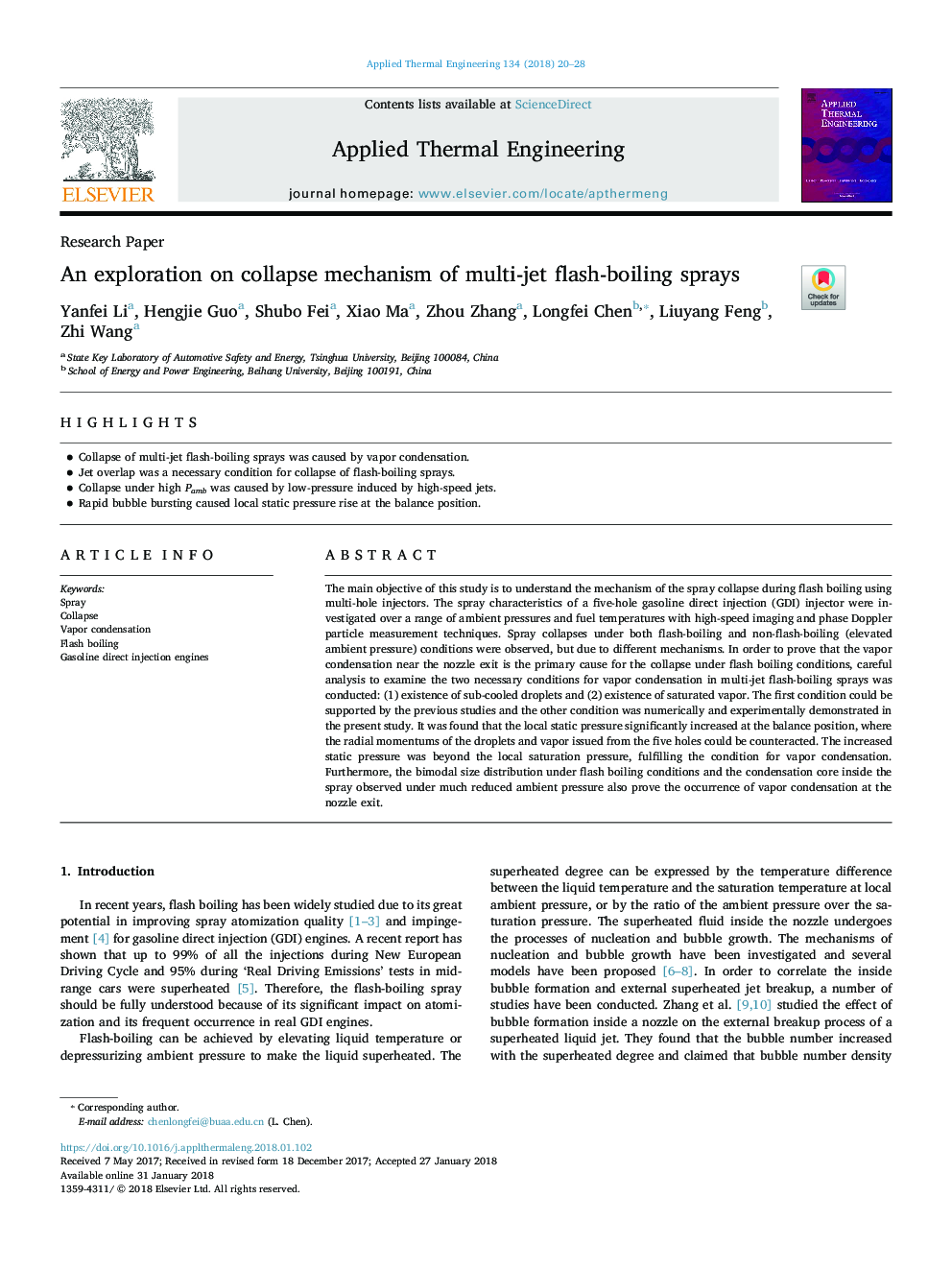| Article ID | Journal | Published Year | Pages | File Type |
|---|---|---|---|---|
| 7045766 | Applied Thermal Engineering | 2018 | 9 Pages |
Abstract
The main objective of this study is to understand the mechanism of the spray collapse during flash boiling using multi-hole injectors. The spray characteristics of a five-hole gasoline direct injection (GDI) injector were investigated over a range of ambient pressures and fuel temperatures with high-speed imaging and phase Doppler particle measurement techniques. Spray collapses under both flash-boiling and non-flash-boiling (elevated ambient pressure) conditions were observed, but due to different mechanisms. In order to prove that the vapor condensation near the nozzle exit is the primary cause for the collapse under flash boiling conditions, careful analysis to examine the two necessary conditions for vapor condensation in multi-jet flash-boiling sprays was conducted: (1) existence of sub-cooled droplets and (2) existence of saturated vapor. The first condition could be supported by the previous studies and the other condition was numerically and experimentally demonstrated in the present study. It was found that the local static pressure significantly increased at the balance position, where the radial momentums of the droplets and vapor issued from the five holes could be counteracted. The increased static pressure was beyond the local saturation pressure, fulfilling the condition for vapor condensation. Furthermore, the bimodal size distribution under flash boiling conditions and the condensation core inside the spray observed under much reduced ambient pressure also prove the occurrence of vapor condensation at the nozzle exit.
Related Topics
Physical Sciences and Engineering
Chemical Engineering
Fluid Flow and Transfer Processes
Authors
Yanfei Li, Hengjie Guo, Shubo Fei, Xiao Ma, Zhou Zhang, Longfei Chen, Liuyang Feng, Zhi Wang,
